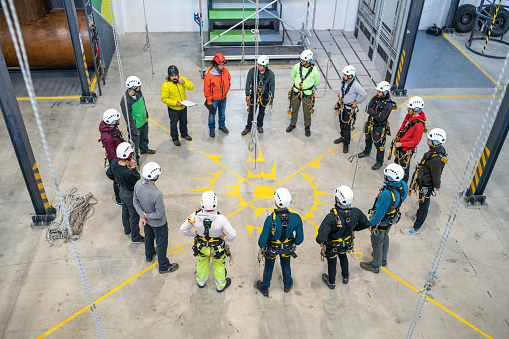
In one way or the other, your employees will need safety training at the workplace. This training ensures they follow the set safety guidelines and that they are safe while in the workplace. Procedures and policies aren’t enough to portray a safe working place. You need to be effective in how you communicate such guidelines to the employees. How do you streamline these processes? Here is how you can do it.
Identify and Control Safety Hazards
Before conducting the training module, start first by identifying the safety hazards in each department. You can get a competent team to check such areas and give reports before commencing on the training. After finding the risks, use the control model to eliminate or substitute safety equipment available to deal with the hazard. Besides replacing, you can upgrade or service the existing safety equipment if you are sure of them working better to control the situation in case of any safety hazard. Use the team to identify the best protective equipment for each employee, depending on their working nature.
Understand the Training Regulations
Each safety measure has its training regulations. Before conducting any training, identify the kind of exercise you are about to carry and ensure it meets the set guidelines according to the Regulatory Agency guidelines, including the OSHA standards. Ensure every regulation is compliant with the law. A food safety training program becomes effective when it covers program management and content development. It also needs to cover training delivery, its evaluation, and documentation. When the one you want to deliver doesn’t cover such, you need to go to the drawing board to develop something realistic.
Have a Proven Method of Delivering Safety Training
Training should get done using an effective method to ensure that every employee is catered for. It should have a detailed step-by-step procedure, highlighting sensitive areas where the employee needs to master. According to BasicSafe.us, basic training should be done several times to ensure employees have the knowledge and skills required. The training should empower the employees with the ability to work safely and prevent any accidents at the workplace. The training should create awareness of the hazards and show how to tackle such dangers if they happen. The best training module considers adult learning principles, gives multiple modes of learning and offers hands-on exercises.
Identify what Needs Training
Not everything needs training. You have to identify areas that require training and focus on that. Before starting any activity, it’s advisable to set up communication channels between the management and the employees to identify areas needing training. While the company must communicate its goals to the employees, it also must listen to what the employees have to say. The company needs to learn the employees’ wants, goals, and issues and hazards they might face while working. Through this, it will communicate and offer training smoothly, according to what the employee needs.
Know your Employees
You can’t conduct a successful training if you don’t know your employees. You need to know their personality and their learning styles to come up with tailored training. Team leaders need to prioritize people in their team to come up with successful training. The company must understand that every employee is a company asset and needs to know how each employee contributes to the company’s growth. By doing so, every employee will feel privileged working for the company, and they will take the training with a positive mind.
Get Prepared and Design Training with Active Learning Principles
Getting prepared does not mean reading the safety regulations to your employees. It involves stressing the critical points of safety regulations and showing your employees how essential it is to master them. You also need to show them how the training relates to their jobs and how hazards can negatively affect their careers. Keep the train focused on their work and work-related issues. It shouldn’t go beyond that.
Train your Employees as Adults
We understand that training is a form of the classroom.
But you need to realize that you are dealing with adults. Use the right language and tone for the audience. You need to avoid shouting at them, telling them what to do and what not to do. Give them enough freedom and time to complete their training. Get a supervisor who will set the goals and guide them in achieving the goals.

Other things you can consider during training include the use of visuals to ensure information gets well with the audience. After the training, have an evaluation to check if it went well, and any shortcomings need to be noted down. You can provide refresher courses once in a while to ensure they remember everything concerning the training.

